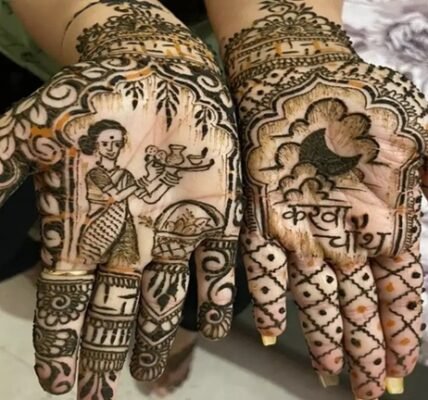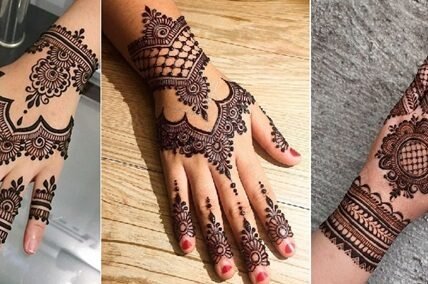Introduction to Western Mehndi Design
Mehndi, additionally called henna, has been a vital part of conventional body artwork for centuries. It has deep cultural roots in nations like India, Pakistan, and the Middle East, in which it is commonly carried out in the course of weddings, gala’s, and religious ceremonies. However, over time, Western Mehndi Design has emerged as a unique and contemporary interpretation of traditional henna patterns. Unlike the complicated and distinct designs of South Asian mehndi, Western mehndi is characterized by minimalist styles, geometric shapes, cutting-edge motifs, and a freestyle method.
The developing reputation of Western mehndi designs may be attributed to the global appreciation of frame artwork, fashion developments, and the impact of social media. Unlike traditional henna programs, Western mehndi frequently carries modern-day inventive elements, including tattoos, mandalas, florals, and summary shapes, making it an elegant and today’s body adornment desire. This fusion of traditional and contemporary patterns has made Western mehndi a fave among individuals who love the elegance of henna but select a more diffused and chic appearance.
History and Evolution of Western Mehndi Design
Mehndi utility has been practiced for over five,000 years, specifically in South Asia, the Middle East, and North Africa. It became historically used to represent pleasure, beauty, and non-secular awakening. However, the Western adaptation of Mehndi started gaining prominence within the late 20th and early twenty-first centuries when worldwide vacationers, celebrities, and fashion influencers introduced it as a shape of temporary frame art.
The idea of Western mehndi layout evolved while Western cultures started to embrace henna as a fashion assertion as opposed to only a cultural lifestyle. Artists in Europe and America started out experimenting with new patterns, along with mandalas, dreamcatchers, delicate lacework, and terrible area designs, to create a sparkling and modernized model of Mehndi. Unlike traditional mehndi, which covers the hands and feet in dense styles, Western mehndi frequently features minimalist designs located strategically on exclusive components of the frame, which include the wrist, forearm, back, or even shoulders.
Additionally, Western mehndi design has additionally influenced white henna, glitter mehndi, and metal tattoos, giving a present day and stylish touch to the age-antique artwork shape. As style traits retain to conform, the appeal of Western mehndi stays strong, making it a favourite amongst folks that enjoy frame art without permanent tattoos.
Key Features of Western Mehndi Design
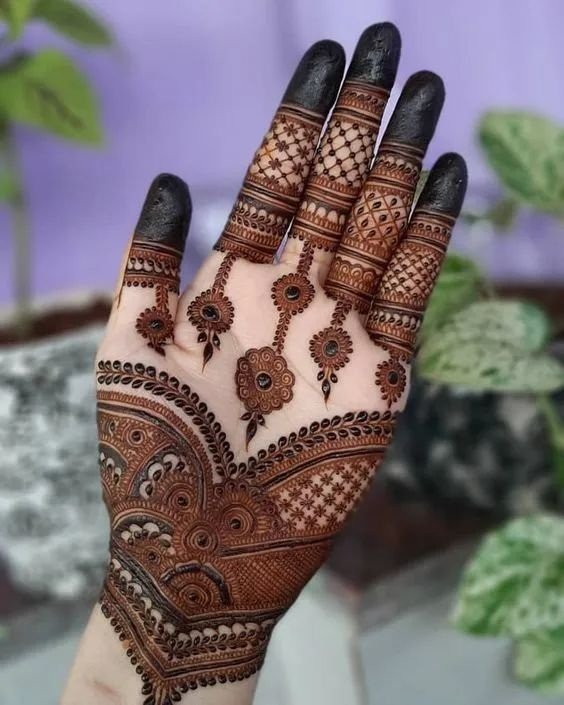
Western mehndi designs have numerous special traits that set them apart from conventional patterns. Some key capabilities encompass:
1. Minimalistic and Elegant Patterns
Unlike conventional mehndi, which regularly consists of tricky floral and paisley motifs, Western mehndi embraces a more minimalistic technique. The designs are regularly sensitive, easy, and stylish, making them ideal for contemporary fashion tendencies.
2. Use of Negative Space
Negative space plays a vital role in Western mehndi designs. Instead of masking the whole place with henna, those designs leave clean spaces strategically, giving the sample a modern and creative touch. This fashion complements the splendour of the pores and skin and makes the layout appear greater state-of-the-art.
3. Geometric and Abstract Elements
One of the maximum distinguishing factors of the Western mehndi layout is the use of geometric shapes, sharp lines, and summary patterns. These elements supply the layout with a dependent and contemporary appearance, making it extra attractive to individuals who pick cutting-edge aesthetics over traditional floral designs.
4. Placement on Different Body Parts
Unlike traditional mehndi, which is more often than not applied on arms and feet, Western mehndi may be visible on various elements of the body, which include the lower back, palms, shoulders, collarbone, palms, or even legs. This flexible placement makes it a unique fashion announcement for diverse events.
5. Integration with Other Body Art Styles
Western mehndi regularly combines tattoo-inspired designs, mandalas, lace motifs, or even tribal styles. Some artists also include white henna, steel henna, or temporary glitter mehndi to create a progressive and captivating impact.
6. Temporary and Fashion-Forward
While traditional mehndi is deeply rooted in lifestyle and rituals, Western mehndi is greater approximately style and self-expression. Since it fades away inside some days, it serves as a temporary yet stylish manner to adorn the body without long-term commitment.
Popular Western Mehndi Design Patterns
There are numerous famous types of Western mehndi designs, each offering a unique aesthetic attraction. Some of the most sought-after designs encompass:
1. Mandala Mehndi Designs
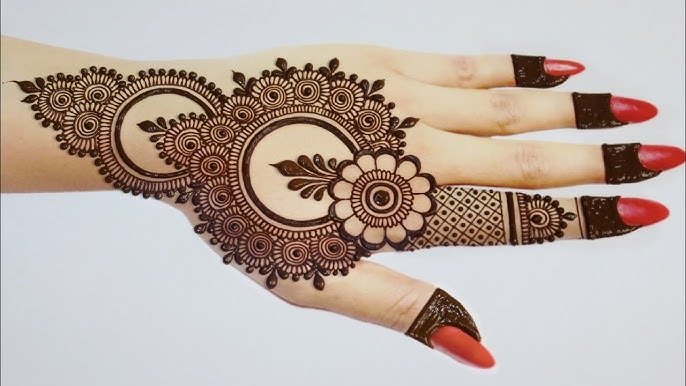
Mandalas are sacred geometric styles that have deep religious importance. In Western mehndi, mandalas are frequently used as a principal motif at the palms, forearms, or returned. The symmetrical nature of mandalas creates an enthralling effect, making them a popular desire for artistic henna designs.
2. Lace-Inspired Mehndi Designs
Lace mehndi designs are sensitive and feminine, equivalent to the difficult information of lace material. This fashion is often seen on wrists, arms, and ankles, giving a fashionable and elegant contact to the layout.
3. Bracelet and Ring Mehndi Designs
Western mehndi designs often incorporate rings-stimulated styles which include bracelets, jewellery, and anklets. These designs supply the illusion of real rings and are perfect for folks who want a diffused yet fashionable henna sample.
4. Dreamcatcher Mehndi Designs

Dreamcatchers characterize protection and positivity. Western mehndi artists frequently create dreamcatcher-inspired styles on the again, forearm, or thigh, incorporating feathers and intricate net-like designs.
5. Finger Mehndi Designs
Minimalistic finger mehndi designs are tremendously present-day in Western henna art. These designs’ cognizance of diffused styles like dots, strains, tiny florals, and geometric shapes at the palms, makes them ideal for folks who opt for simple and fashionable designs.
6. White Henna and Glitter Mehndi
In latest years, white henna and glitter mehndi have received enormous popularity. White henna creates a tattoo-like impact, whilst glitter mehndi provides a shimmering touch to the design. Both patterns are normally used for events, music fairs, and bridal fashion.
How to Apply Western Mehndi Design
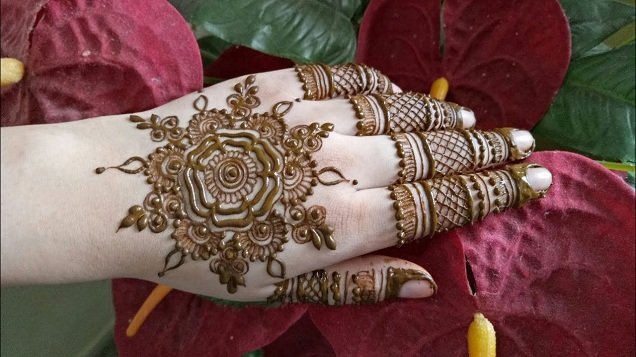
Applying Western mehndi requires some important steps to ensure that the layout comes out beautifully and lasts for a prolonged duration. Here’s a step-with the aid of-step guide to accomplishing the ideal Western mehndi layout:
1. Prepare the Skin
Before applying mehndi, make certain the pores and skin is smooth, dry, and unfastened from any oils or lotions. Exfoliating the pores and skin can help the henna adhere better and result in a darker stain.
2. Choose the Right Henna Paste
For Western mehndi designs, opt for high-quality natural henna paste. If you want to experiment with white henna or glitter mehndi, use specialised henna products that offer the favoured effect.
3. Use a Fine-Tipped Cone
Since Western mehndi designs are aware of precision and delicate styles, the usage of a quality-tipped cone is critical for developing sharp traces and difficult details.
4. Let the Henna Dry Properly
Allow the henna paste to dry for a minimum of three to 6 hours for a deep stain. For darker effects, keep away from washing the area with water immediately after casting off the dried paste.
5. Moisturize for Longer-Lasting Results.
Applying natural oils like coconut oil or lemon-sugar combination allows for sealing the mehndi design and making the stain ultimately longer.
Conclusion: The Future of Western Mehndi Design
Western mehndi layout is greater than just an artwork shape—it’s miles a cutting-edge variation of historical traditions, blending the beauty of henna with current aesthetics. With its minimalist patterns, elegant placements, and fusion of different artistic factors, Western mehndi has carved its area of interest in the global of favour and self-expression.
Disclaimer:
The information provided in this article about Western Mehndi Design is for informational and educational purposes only. While we strive to ensure accuracy, mehndi trends, application techniques, and products may vary. The use of henna or other mehndi products should be done with caution, especially for individuals with sensitive skin or allergies. Always perform a patch test before applying henna to avoid adverse reactions. We do not take responsibility for any skin reactions, product quality issues, or results of Mehndi application. Readers are encouraged to consult a professional mehndi artist or dermatologist for personalized advice.
Read More:-

